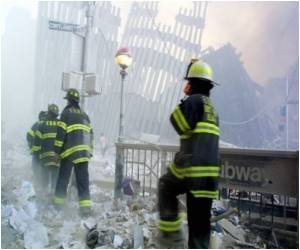Highlights
- Anabasum, a new drug has shown significant promise in reducing severity of dermatomyositis disease in patients
- Dermatomyositis is an rare and often incurable inflammatory disease, often marked by skin rashes and muscle weakness
- Dermatomyositis has around 100,000 cases alone in United States and is often ineffective and requires immunosuppressive drugs
Researchers will present their findings at the American College of Rheumatology Annual Meeting in San Diego next week.
Dermatomyositis is an inflammatory disease that causes a rash on the skin and is frequently associated with muscle weakness. Some patients are only affected on the skin.
Other symptoms can include fevers, shortness of breath due to lung disease, weight loss, and sensitivity to light.
While there are fewer than 100,000 cases of DM overall in the United States, treatment is often ineffective and frequently requires drugs that suppress the immune system, which can leave patients susceptible to other illnesses.
One of the first challenges was developing a way to measure the severity of a patient’s DM. In other dermatologic conditions, such as psoriasis or eczema, doctors can measure the percentage of the skin that is affected - a measurement known as body surface area.
Werth and her team developed a metric called the Cutaneous Dermatomyositis Disease Area and Severity Index (CDASI). It measures the amount of skin severity as separate activity and damage scores, with a higher score representing more severe disease.
The median activity score among Penn’s clinical population is 13, but this trial involved patients with more severe disease, so scores ranged from 33 to 35.
Penn researchers have spent the last decade developing and validating the CDASI, and though it has become standard practice for use in DM research, this is the first placebo-controlled randomized clinical trial to report the score to evaluate the results of a new treatment.
Patients in this trial all had skin-predominant DM and had not responded to standard treatments such as antimalarial or immunosuppressive therapies.
Patients received a single 20mg dose of anabasum for a month and then went to two doses per day for two months, or they were assigned to the placebo.
All patients were followed for one month post-treatment. The 11 patients who received the drug had a mean decrease of more than six points relative to the placebo during dosing with the higher dose of drug.
The most common side effects seen in the study were diarrhea, dizziness, fatigue, and dry mouth, but these were mild and did not cause anyone to stop taking the drug.
Twenty of the 22 patients on this trial have entered a one-year, long-term extension study. Werth says that will be critical to understanding the efficacy and safety of anabasum, but she also says a larger study is warranted based on these results.
This trial was supported by the NIH’s National Institute of Arthritis and Musculoskeletal and Skin Diseases (R21AR066286) and Corbus.
Pharmaceuticals, which is developing anabasum for a number of rare inflammatory diseases including DM.
Reference
-
New Treatment Shows Promise for Patients with Rare Dermatologic Disease - (https://www.pennmedicine.org/news/news-releases/2017/october/new-treatment-shows-promise-for-patients-with-rare-dermatologic-disease)
Source-Eurekalert











